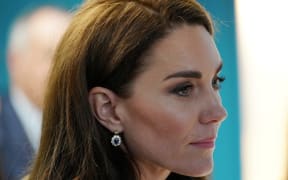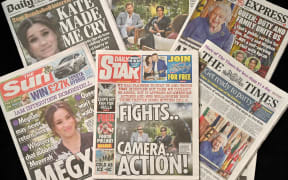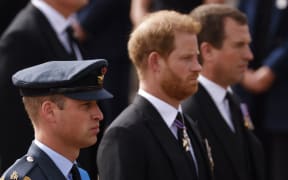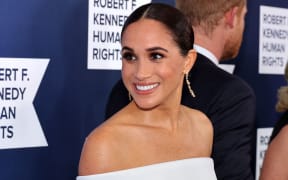By Lucia Stein and Rebecca Armitage, ABC
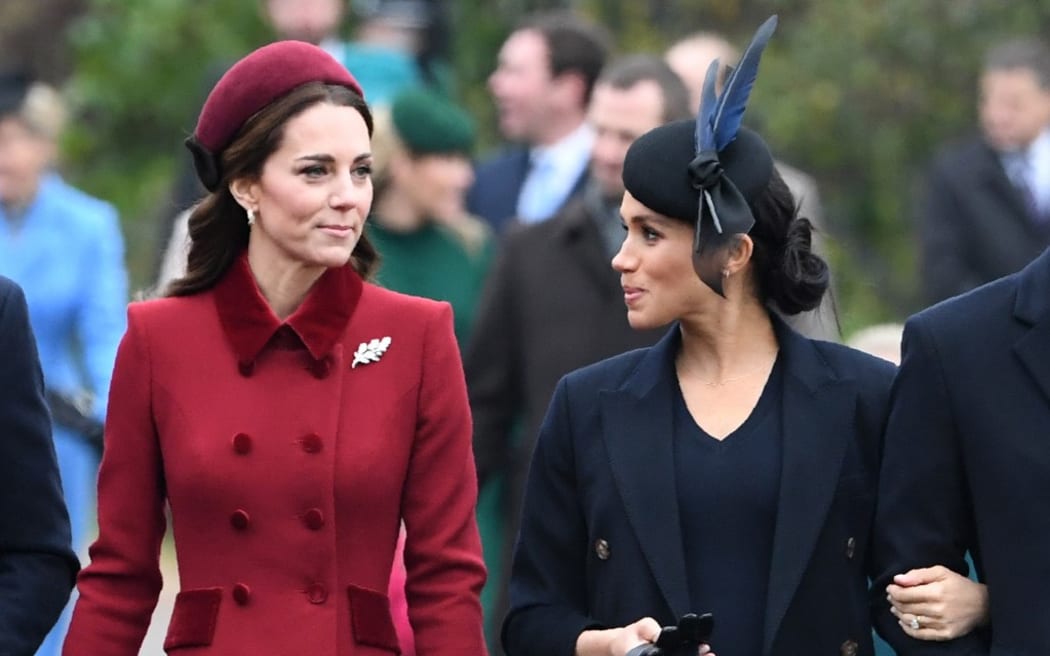
With neither of his daughters-in-law carrying out royal duties, King Charles may need to adjust to a new reality. Photo: AFP
Unlike his mother's expansive royal circle, King Charles III's vision of a modern monarchy was slimmed down to a core group of working members.
And a week before Coronation Day, his lifelong ambition was close to being realised.
Bunting was strung across London streets and St Edward's crown was buffed and polished in preparation to land on the head of the new monarch.
But as King Charles approached the most important day of his life, his no-nonsense sister had a warning for her brother.
Anne, Princess Royal, was asked by a Canadian journalist what she thought of his vision for a leaner, cheaper monarchy.
She was, as always, brutally honest.
"Well, I think the 'slimmed down' [monarchy] was said in a day when there were a few more people around," she said during the interview in St James's Palace.
"It doesn't sound like a good idea from where I'm standing, I would say. I'm not quite sure what else we can do."
As the longest-serving heir apparent in British history, Charles had seven decades to think about what he wanted his reign to look like.
At some point, while his mother Queen Elizabeth II was on the throne, he decided he would do things differently.
During the Elizabethan era, every time the family emerged to wave to their subjects, the balcony at Buckingham Palace would be very full indeed.
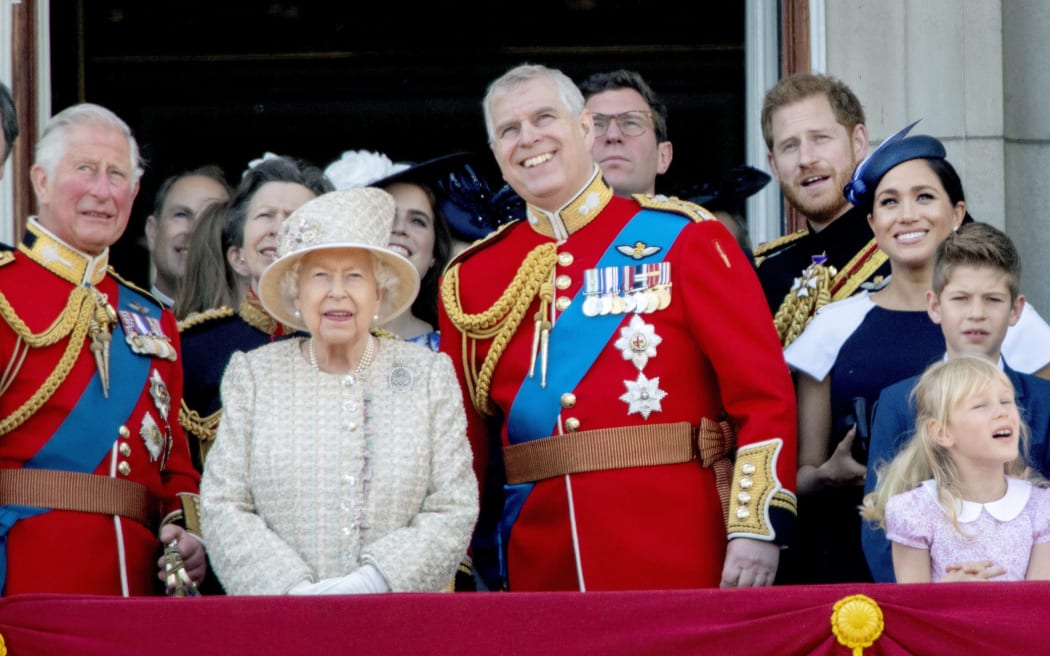
Some of the royal family on the balcony at Buckingham Palace following Trooping the Colour in 2019. Photo: AFP
But as a monarch for the 21st century, Charles decided that a sleeker model was in order.
"You have a narrower number of people living off the public purse," a source close to the king told the Financial Times in 2022.
"It will be less about the royal family and more about direct successors, less about the history, heritage and glamour, more focused on the role of head of state."
Charles is not the first, nor is he the only monarch to have considered reducing the royal circle, with other European monarchies shrinking their size to a team of core players in a bid to reduce their costs.
But just 18 months into his reign, Charles' vision is being called into question.
He has largely stepped back from public-facing duties as he undergoes treatment for an undisclosed form of cancer.
His daughter-in-law, Catherine, the Princess of Wales, is also absent while she undergoes chemotherapy for cancer.
She says she will return to public duties when cleared by her medical team.
While there has been an outpouring of support for the royal family in this time of crisis, commentators have also voiced concern that the monarchy is looking more "threadbare" and "fragile" than sleek and agile.
As he tries to keep an ancient institution going in a modern world, Charles might have to rethink his stance on the importance of history, heritage and glamour.
The monarchy needs to appeal to younger subjects
Over the past 40 years, the National Centre for Social Research in the United Kingdom has surveyed Britons to gauge their views on various issues.
One subject they consistently ask the public about is their attitude towards the monarchy.
We do not know if the palace pays much attention to this particular survey but if it does, a long-term trend in the population's outlook on the institution may give them pause.
When it comes to significant national events and celebrations - such as jubilees, marriages and births - the public's feelings towards the royal family are generally quite positive.
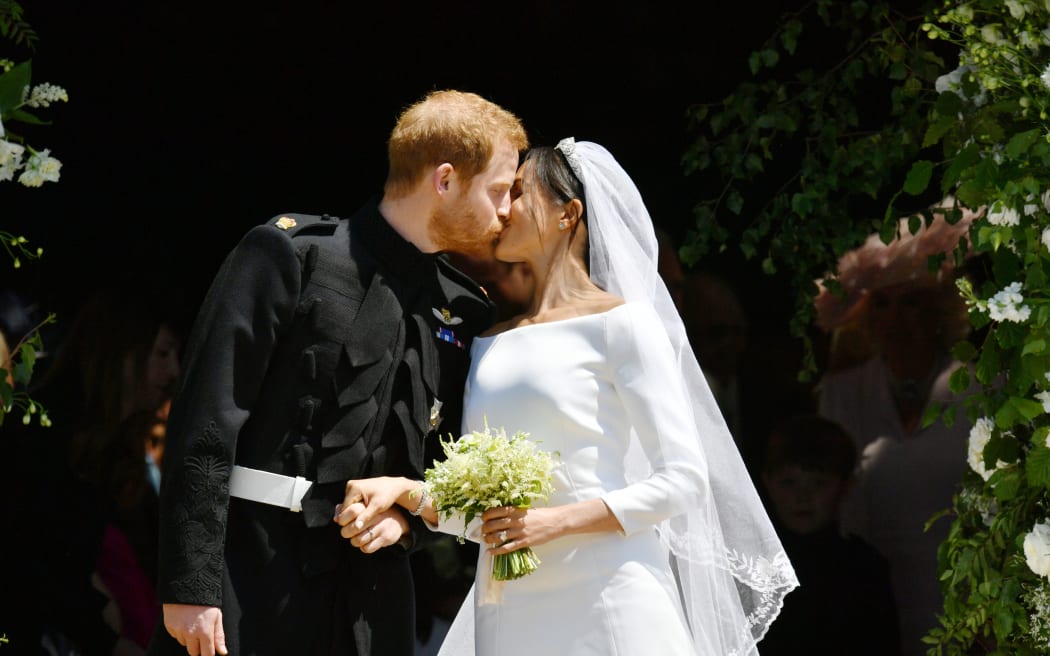
Prince Harry and Meghan's wedding at Windsor Castle in 2018 drew millions of viewers around the world. Photo: AFP
Such was the case in the 2010s when the Windsors' youngest members - Prince William and Princess Catherine and Prince Harry and Meghan, Duchess of Sussex - were announcing engagements, hosting weddings and having children.
But in recent years, apart from a brief spike after the platinum jubilee and the Queen's death, there has been a longer-term trend of declining support for the monarchy.
The centre found support for the institution has dropped since data collection began in 1983, with the view that the monarchy is "very important" reaching its lowest percentage in 2023.
Dig a little deeper and the data reveals that positive attitudes to the royal family tend to be higher among those aged 55 and over. In this age group, 42 percent believe the monarchy to be "very important".
But that support drops off a cliff among younger generations, with just 12 percent of 18-34-year-olds holding this same view.
The House of Windsor clearly faces a challenge going forward in how it appeals to younger generations who place less value on the institution as a whole.
The family lost two of its most high-profile young members
William, Harry, Catherine and Meghan once appeared to be the key to unlocking an appealing, youthful image of the monarchy that fit with the modern world.
The spare and his wife were symbolically representative of a multiracial Britain and together with the next-in-line and Catherine, the quad were able to promote their various causes with a high degree of visibility and impact.
"They have this energy that makes the royal family attractive, fun, glamorous," Emily Nash, the Royal Editor at HELLO! magazine, explained to ABC America's 2020 programme.
Reporters around the world dubbed the group the "fab four" in a public relations coup for the palace.
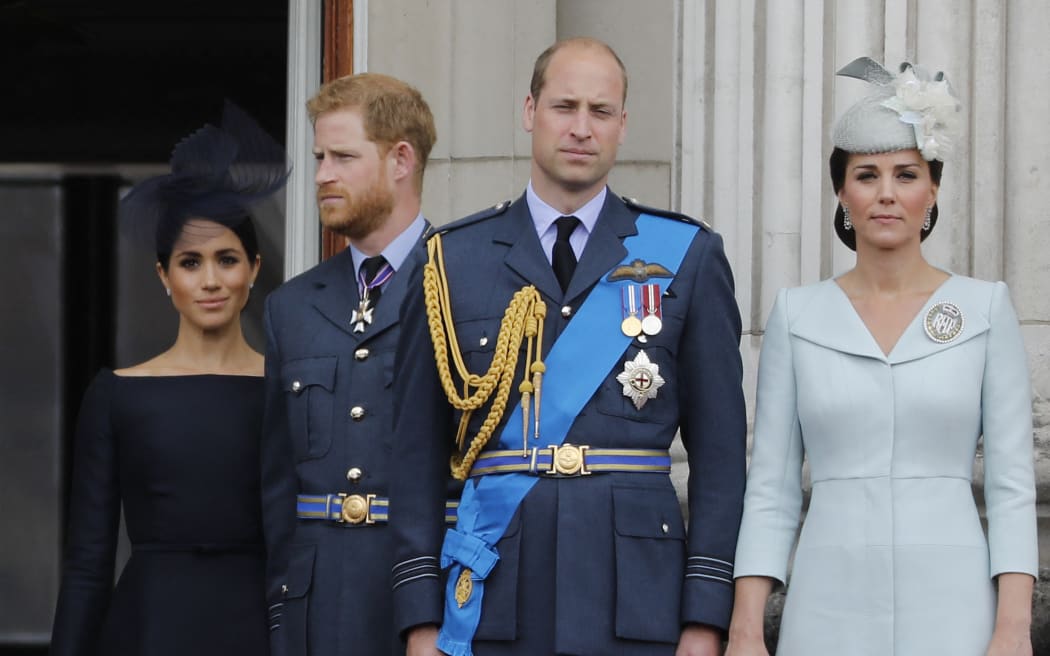
Meghan, Harry, William and Catherine mark the centenary of the Royal Air Force in 2018. Photo: AFP / Tolga Akmen
But when Harry and Meghan stepped back from their roles in 2020, the monarchy's shiny new future was dealt a significant blow.
At first, the spare and his wife had hoped for a half-in, half-out solution.
At a hastily organised Sandringham summit with senior royals and their aides, Harry arrived with the impression they would be discussing five options for his and Meghan's exit, from maintaining the status quo to a full departure.
The young royal appeared to be looking for a flexible working model similar to modern corporate workplaces.
But the monarchy is not known for bending to the will of others and the couple were effectively told they were out.
Four years later, the absence of the king and Kate has drawn attention to how overstretched the Windsors are when it comes to public engagements.
"This is a slimmed-down monarchy in the ways the king could never have anticipated," royal biographer Sally Bedell Smith told a tabloid earlier this month.
"This puts into much sharper focus what a terrible mistake it was for Harry to leave.
"If he and Meghan had stayed in Britain and stuck with their jobs, they could be very vital players right now."
While it's unlikely that the family would ask the Sussexes to return, UK commentator Omid Scobie says Meghan and Harry are now happily settled in California and have no interest in resuming their old lives as working royals.
He wrote in his book Endgame that Meghan "never wants to set foot again in England" because she is unwilling to "dive back into the soap opera of the court".
Even when Harry, Meghan and Prince Andrew were all working members, there were questions about the viability of the family's working model, given there would one day be fewer members to help satisfy the demands of the job.
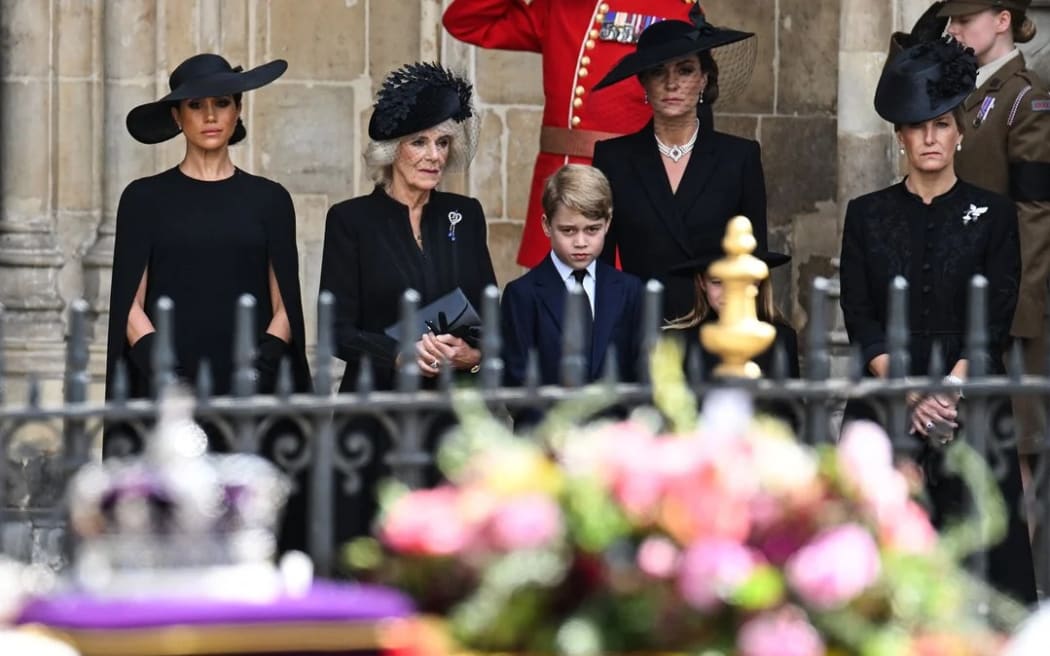
Meghan, Duchess of Sussex, Camilla, Queen Consort, Prince George of Wales, Catherine, Princess of Wales and Sophie, Countess of Wessex at the funeral of Queen Elizabeth in 2022. Photo: AFP / Pool
As a senior generation has passed, the circle of royal fill-ins has grown smaller and there are now fewer people to satisfy charities' demands for royal patronage.
This year, with the king and Kate undergoing cancer treatment, the family will conduct less than half the engagements that were carried out in 2014.
At the same time, a handful of senior royals are now approaching ages considered appropriate for retirement.
While older, higher-profile figures bring a sense of continuity and stability, the public also expects the glitz and glamour of weddings, births and other events.
The popularity of William, Kate and the couple's children, whose approval rating often ranks above other members of their family, is evidence of that.
What about the minor female royals?
As Queen Elizabeth once said, "We need to be seen to be believed."
Kate, and other young female royals who have come before her, help raise the family's visibility by appealing to the masses and newspaper editors alike.
If the princess ever makes a public appearance, she is guaranteed the front page of the UK newspapers the next day - sometimes to the frustration of her male relatives.
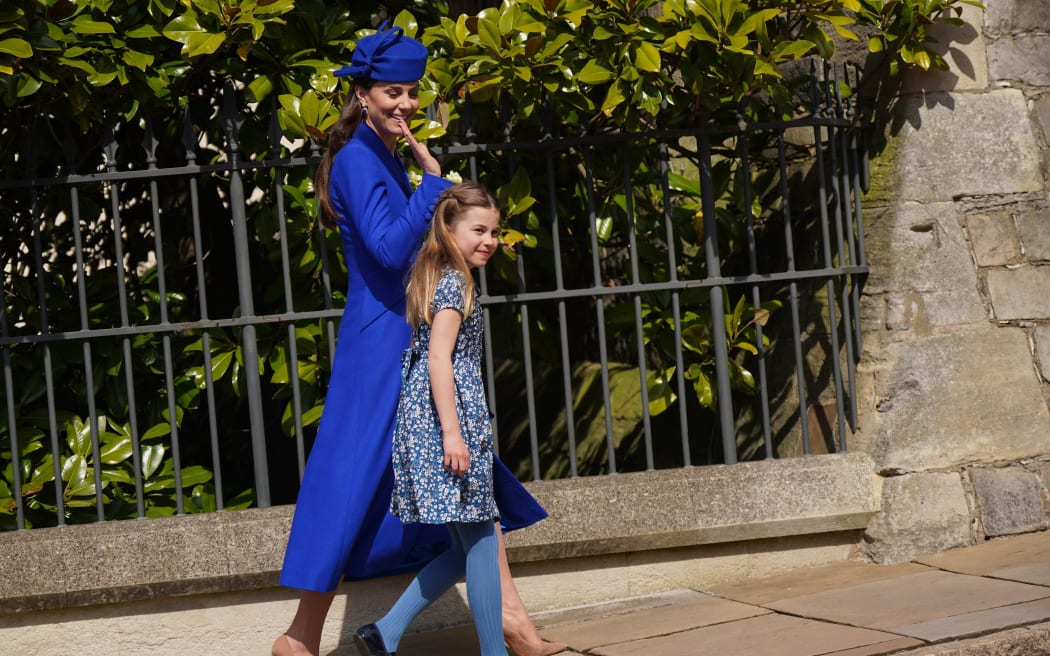
Princesses Catherine and Charlotte at Easter 2023. Photo: AFP/Yui Mok
Her outfits are obsessively tracked by fashion blogs and Instagram accounts, often leading to the items selling out within hours of her wearing them.
As monarch, Charles now confronts a shortage of royal women.
His glamorous, world-famous daughters-in-law are both missing in action, with Kate recovering from cancer, and Meghan exiled by what she described as relentless bullying by the UK press and a failure of her own family to protect her.
His nieces, Princesses Eugenie and Beatrice, and Lady Louise are not considered working royals as part of his slimmed-down model.
And his granddaughters are all far too young to fill the void.
While 2024 is shaping up to be a tricky year for the House of Windsor, Paddy Harverson, a former journalist and communications secretary to William and Charles, says the monarchy does not appear to be in danger.
"When I worked there, we had the blessing of three working generations. We had the Queen and the Duke of Edinburgh, and then we of course had the Prince of Wales - my old boss, now King Charles - and then we had William and Harry," he told the BBC.
He said this meant there were "a lot of people" who could contribute and share the load of the royal schedule.
With the Queen and Prince Philip's death, the stepping down of Harry and Meghan and the stripping of Andrew of royal duties, it may be time to adjust to a new reality.
"There's fewer of them - and everyone needs to sort of understand that," he said.
"...I think the nation ... and the media and everyone who follows this [needs to adjust] to a smaller family but still very busy doing what they do in their own way."
This story was originally published by the ABC.

